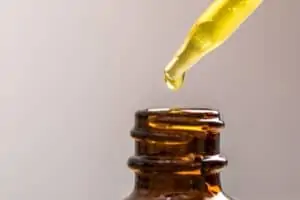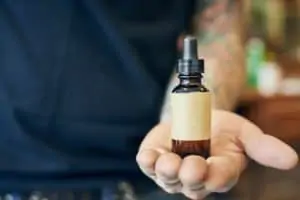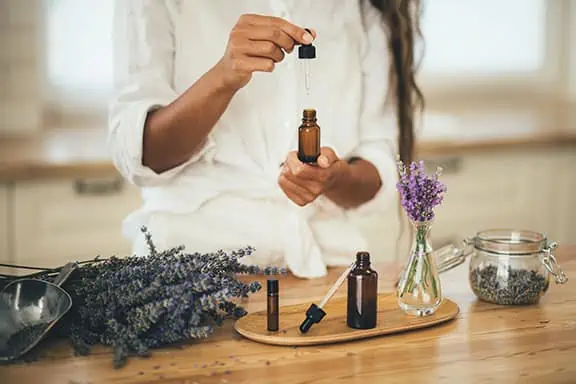Home Aromatherapy
Some people may think that developing custom essential oil blends are strictly for seasoned aromatherapists. Actually, it’s a fun and creative activity for those new to incorporating essential oils into their daily life who want to dig deeper into exploring the world of aromatherapy. It may be time to try your hand at creating essential oil blends at home.
4 Things to Consider When Creating an Essential Oil Blend
- Proportion: When experimenting with essential oils, you will come to find that some have a significantly more potent or intense aroma than others. This is where proportions come in. Always start with a little as you can add more along the way. It can be challenging once you’ve added too much and then try to work backwards so to speak.
 We recommend keeping a paper and pen nearby to accurately record (in detail) your formula as it comes together. Trust us…you’ll want to write it all down as one extra drop can really shift things into a different formula altogether.
We recommend keeping a paper and pen nearby to accurately record (in detail) your formula as it comes together. Trust us…you’ll want to write it all down as one extra drop can really shift things into a different formula altogether.
- Glass Bottles, Pipettes & Gloves: Why glass and not plastic? The glass won’t react with the sensitive, volatile oils. Pipettes are inexpensive and key to have on hand to really be precise in your measurements. Some people like to wear gloves while formulating as essential oils should not be applied topically without dilution. So, this protects you in times where things can get just a little messy.
- Use Small Amounts: When creating a brand new, unique formula, begin with a very small amount. We recommend using a 1ml or 2ml glass jar for this purpose. Why? Because high-quality essential oils can be pricey, and formulas can take a lot of experimentation and many iterations. You’re just going for the right mix of oils not quantity in this step. Don’t start off with the mindset of trying to make a whole batch! Shoot for the following formula:
10 DROPS = 10 PARTS = 100% of the TEST FORMULA
Formula: Just like in perfumery, essential oil blends are typically made up of base, middle and top notes. So, now’s a good time to dive into that.
What are Base, Middle & Top Notes?
When formulating a custom essential oil blend, it’s not really about adding 3 drops of x, 3 drops of y and 3 drops of z. It might be 2 drops of one, 5 drops of another and so on. And that’s part of the fun of it all. Plus, you don’t have to be limited to one essential oil for each category (i.e. Top, Middle & Base). You may have just two essential oils in a blend or 10!
It’s worth noting that on every Artisan Aromatics product page, you’ll find the respective essential oil note as a convenient reference.
- Base Notes: This is a good starting point and essentially a foundation of sorts for your formulation as they are the longest lasting notes of the blend. Some base notes may have a less distinct aroma than others yet can still play a significant role in helping the sustain the top notes longer.
- Middle Notes: From base notes, head up the ladder to add your middle notes. As you progress in each of these steps, think of it as adding on to what’s already in the bottle…you’re creating complimentary layers to build upon your (base) scent.
- Top Notes: This is your ‘first impression’ note…what you initially smell after the whole formula is complete.
 The trick with formulating essential oil blend is creating one where all of the notes seem to literally blend cohesively into one another seamlessly. Each oil is more of a nuance than an overpowering distinction over the others. It’s similar to wine. You can detect ‘hints’ of aromatics.
The trick with formulating essential oil blend is creating one where all of the notes seem to literally blend cohesively into one another seamlessly. Each oil is more of a nuance than an overpowering distinction over the others. It’s similar to wine. You can detect ‘hints’ of aromatics.
These individual notes evaporate at different durations. This is why we recommend allowing your new blend to sit for a bit (covered) perhaps overnight to really get a sense of the final outcome. Retest your blend the following day and make any adjustments you feel are best and you’re ready to go creating a full batch using your 10 drops to 10 parts ratio as mentioned earlier.
Reported Therapeutic Uses of Essential Oils
There is a lot of information and misinformation about the therapeutic benefits of essential oils on the internet, so please do your research and see what works for you. While we can’t make any medical claims as to the benefits of any of the oils that we offer, there is a lot of cultural knowledge and experience of professional aromatherapists that can help guide you.
When formulating blends solely for natural perfumery, you may come across some oils on our site that do not purport to have any therapeutic use and are solely used in scent profiles vs holistic products. This includes absolutes, which are solvent-extracted and often the only available oil for very delicate flowers (Jasmine) or plants that don’t have a true essential oil (vanilla). These are fine to use in aromatherapy blends in small quantities if you’re highly valuing scent in your blend. But by themselves, they don’t offer the therapeutic benefits of essential oils.
So are you ready to get started? Try out one of our Sample Kits, a great way to discover a variety of essential oils with a minimal investment.



